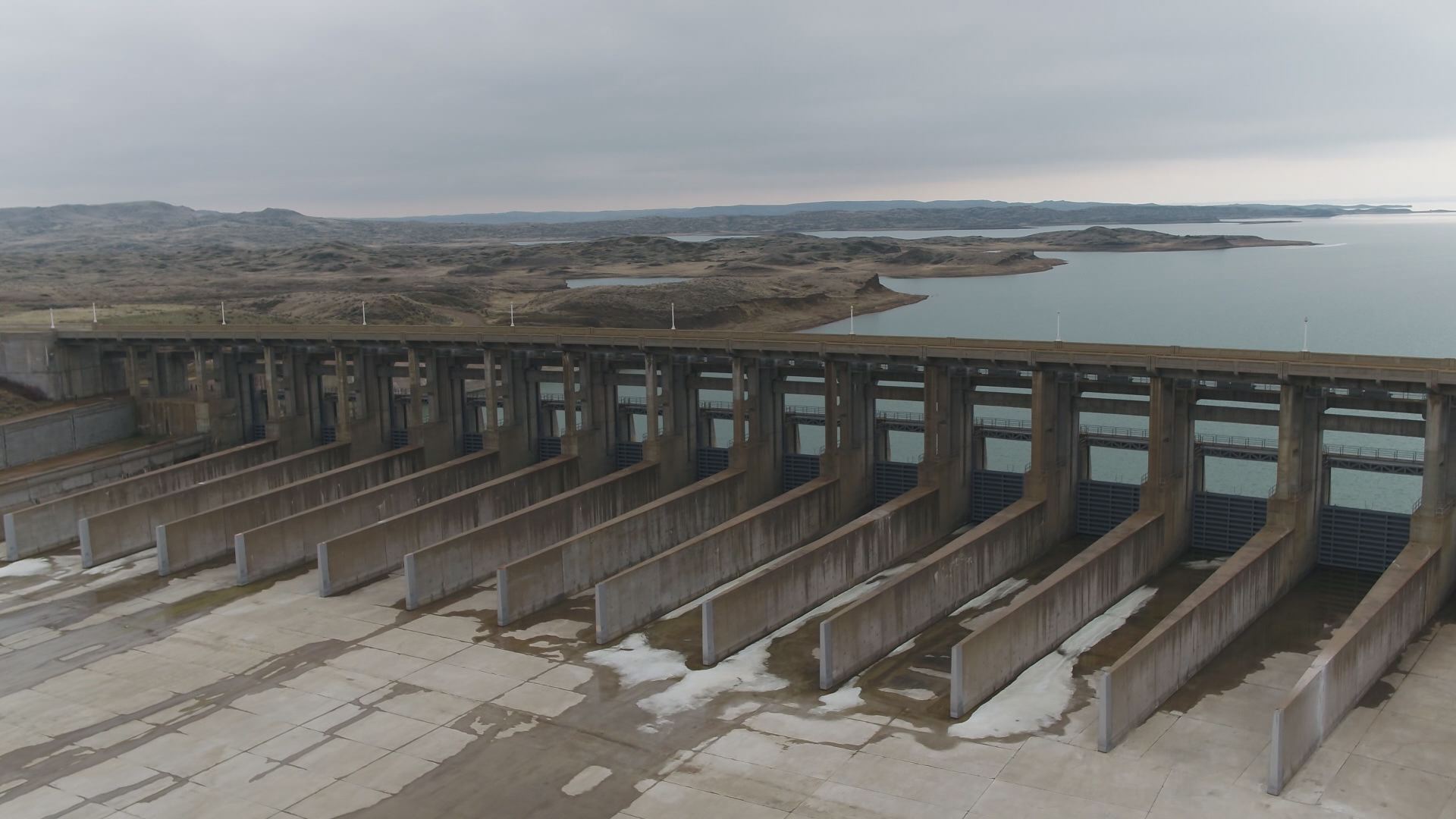Glasgow, Montana, population 3,300, is best known for two things: Peace and quiet. But not far away, holding back one of the biggest reservoirs in the world and sitting on the Missouri River, is the Fort Peck Dam. At 21,000 feet long and 250 feet high, it's almost 80 years old and counting.
"I believe it's the most hazardous dam in North America," Dr. Bernard Shanks said.
Dr. Shanks is a former land and wildlife advisor to the Governors of California and Arizona and has been studying the dams on the Missouri River for more than four decades. He said the problem starts with how the Fort Peck Dam was built. The Army Corp of Engineers, the caretakers of the dam, describe it this way.
"The dam itself was constructed out of hydraulic fill, which is basically a slurry of mud and water pumped from both downstream and upstream of the dam location," Darin McMurry, the Fort Peck Dam operations manager, explained.
"It's not a safe methodology to build dams," Shanks said.
He said the technique makes them more likely to collapse: suddenly and catastrophically. In fact, it's something that happened during the dam's construction in 1938.
"One hundred and thirty-five men were caught in it. Eight of them died," Shanks said.
And six were never found. Their bodies lost in the walls of the dam where they remain today.
"It was a dramatic illustration of a fundamental weakness in this dam,” he added.
And when other hydraulic fill dams collapsed, like in California in the 1970s, he says the industry began moving away from hydraulic filling. That's why Shanks is raising the red flag. If a dam this big were to fail, he said there would be deadly consequences downstream.
"It would make the damage from 9/11 look like a drive-by shooting," Shanks said.
Shanks said a Fort Peck failure could lead to a domino-like collapse of all five downstream dams on the way to St. Louis. This sort of cascade dam failure has happened a number of times in locations around the world.
"Along the way, that much water would wash out probably dozens of bridges, railroad bridges, highways, pipelines," he said.
For many St. Louisans, when they think of floods, they think of the Great Flood of 1993. Shanks said this would be worse.
"Oh much worse. This would be the worst flood in American history," said Shanks.
After epic flooding in 2011, the Army Corps of Engineers proposed $225 million in repairs to the Fort Peck dam. They only got about one-fifth of that. Most of that was used to repair the dam's spillway, which had to be opened in 2011 to ensure that water didn't overflow the dam.
"You know we're competing with all the other projects across the nation for funding," McMurry said."We take that funding and use it to the best of our ability and maximize the opportunity to do the repairs that are most critical."
But the Army Corps of Engineers tells 5 On Your Side the flood event of 2011 gave them even more confidence in the Missouri River dam system.
"The thing that struck us is that they operated as designed. We went through the flood well," said Brett Budd, chief of construction.
Dr. Shanks is not convinced.
Besides the dam's aging infrastructure, he said the construction method makes Fort Peck more likely to collapse from seismic tremors or an earthquake, perhaps caused by the oil and gas fracking activity happening just two-and-a-half hours away.
"There's no imminent risk, there's no imminent danger. They are routinely inspected," said the Army Corps Budd.
Shanks contended that we must be vigilant.
"Dick Cheney, when he was vice-president, always said if there was a threat to homeland security, even a one percent chance of a threat we should address it, take care of it. And certainly in the long run, in these wet years the threat is above one percent," said Shanks.
It's his message for the people, from St. Louis all the way to Glasgow: if we wait too long to address the problem, it will be too late.
"It would be a disaster of historic proportions," said Shanks.



